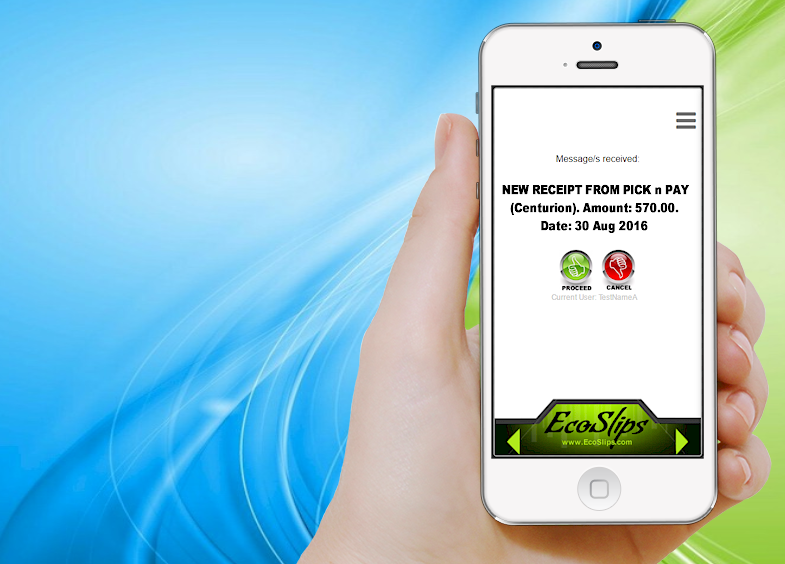A South African tech company wants retailers to send receipts to their consumers’ phones directly upon purchase. These receipts can be held in the cloud, be searchable, and carry advertising.
By MediaStreet Staff Writers
The company, called EcoSlips, says it is launching the new disruptive service to forever get rid of paper-based transaction receipts.
Retailers can now link their point-of-sale systems to EcoSlips and send transaction receipts digitally from any pay point to the consumer’s mobile phone.
Paper receipt waste is reduced and a new advertising platform provides opportunities to grow any business in the retail sector.
Consumers may download the application to their mobile phone and register free of charge. The cashier scans or enters the customer’s unique pin number and a digital receipt is forwarded to their phone within seconds.
Transaction receipts are stored in the cloud from where it can be downloaded, verified, forwarded or printed at any time, from any location.
BENEFITS TO CONSUMERS
Transaction receipts do not get lost and a printer-friendly report with all transactions can be downloaded in seconds. Consumers may use it for tax purposes, corporate expense claims, medical and warranty claims.
Transaction slips can also be forwarded directly from the retailer to the user’s office for corporate expense claims. Users do not even need a cell phone to request their digital receipts at a pay point.
The system saves hours of manual labour, since transaction slips are already scanned and summarised in digital format.
Customer identities remain protected and no spam can be sent to any phone, as is the case with text or email powered systems. Messages do not get lost in spam filters because they are sent directly to the user’s phone.
BENEFITS TO POINT-OF-SALE VENDORS
Vendors can provide a value-added service to their clients at no additional cost. They have an advantage over competitors and receive free advertising exposure in the process.
Free software is provided to link any windows based POS system without backend programming to EcoSlips.
BENEFITS TO RETAILERS
EcoSlips provides an advertising platform that targets only consumers in their immediate geographic location.
Complaints and compliments can be sent directly to the retail manager from the customer’s phone and frustrations caused by waiting in line to speak to a call centre agent are completely eliminated. Service levels can improve significantly when complaints are handled in a timely fashion by the retailer.
According to Henco Schoeman, founder of EcoSlips, “consumers may use the service free of charge. Retailers can significantly reduce paper slip waste, save on printing costs and early adopters may secure an exclusive opportunity to advertise in their geographic area. It is a win-win solution for retailers and consumers.”
EcoSlips is financially supported by Mlab and the SA Technology Innovation Agency (TIA). The service can be used anywhere in the world.
So if you are a retailer, this may be food for thought.




















